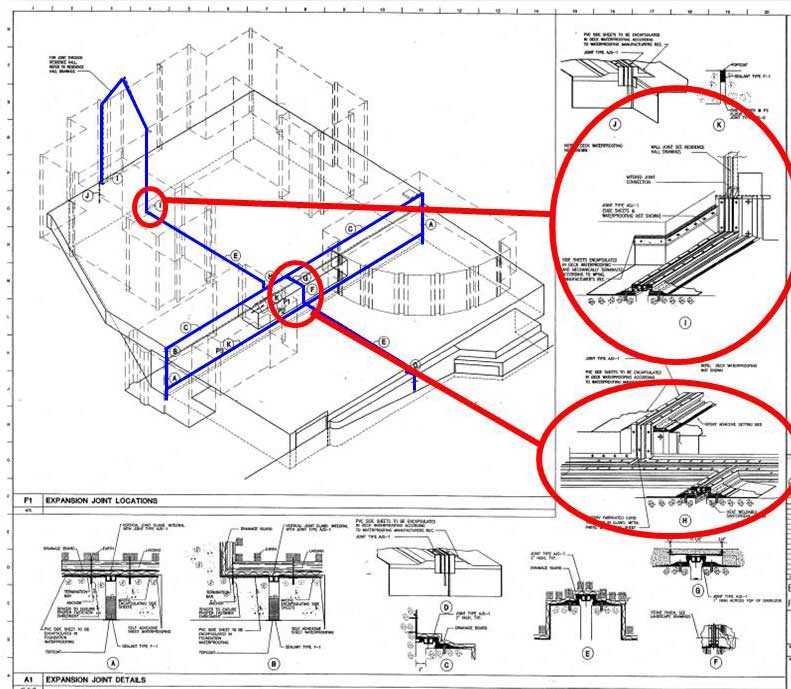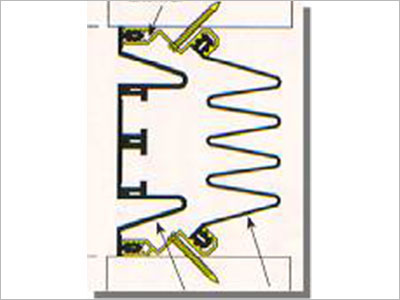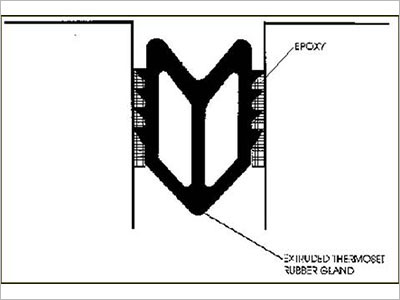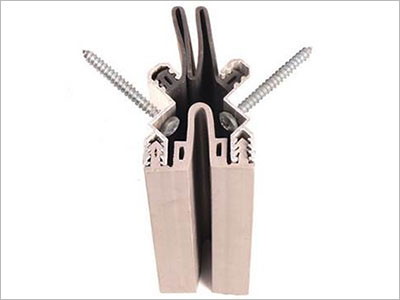Established Wide and / or High Movement expansion Joint Sealing Technologies
However, prior to their use in North America all such systems must be assessed, approved and monitored by the responsible Federal, State and their independent Technical Institutes, and from this work there is increasingly clear guidance to assist owners and professional teams in making the system selection.
The basic expansion joint sealing system materials, features, and their respective advantages and disadvantages for all the different technologies that are in common use for wide and higher movement expansion joint sealing in the UK today, can be summarised as follows:
Compression seals – These were once the most commonly used solution for sealing wider or higher movement capability joints, but today compression seals are increasingly being replaced by other solutions due to their tendency to be, or to become, too rigid to satisfactorily seal substrate irregularities and to perform over a long period. Even quality products of this nature can tend to fail quickly when subjected to tension, thereby requiring expensive replacement after relatively short periods. In practical terms they cannot be regarded as watertight solutions and any compression seals should undergo rigorous inspection during the necessary routine structural maintenance procedures and as part of any scheduled or ad-hoc structural assessment surveys.

Designing Movement Joints in 3D
Inflated seals (usually neoprene) - Increasingly this is being regarded as outdated technology, since instead of webbing they use the air which is contained to create back-pressure, which can cause increasing stress on the adhesive/bond-line, resulting in premature failure when in tension. Inflatable joint seals also tend to suffer from compression-set by nature, which means permanent deformation occurs i.e. no elastic recovery. Also, for their installation and any repairs that are required, the thermoset rubber material used in their fabrication, cannot be welded. Consequently, all joint transitions must be glued and todate the available adhesives for this purpose are not UV resistant – so these cannot be used externally, another distinct practical disadvantage.
Strip seals - Also known as mechanically-fixed joint sealing profiles, strip seals are often the best option for very wide vertical movement joints, certainly those in excess of 305mm, however they are not water or airtight. The biggest downside to this approach to surface sealing is that it can also create voids behind the sealing profile, leading to reduced fire resistance and reduced thermal insulation (high U- and low R-values). Strip seals also generally need intrusive mechanical fixings and they are also not suitable for use in areas with internal corners, since there is no access for mechanically fixing them into position, consequently they are generally of limited use for movement joint sealing, especially where there are any significant performance demands.
Closed-cell foam seals - This is currently the most common type of closed-cell foam seals offered as expansion joint sealing systems in the UK, and they are predominantly EVA based (Ethylene Vinyl Acetate). In addition to these EVA foams, closed-cell polyurethane foam systems are sometimes used, although this material is more commonly used for smaller movement joint filling or backing rods under extruded elastic waterproofing sealants, and for smaller movement joints of less 30mm wide. They are not really suitable for use in wide or high movement expansion joints, because they have very poor elastic recovery, which is a key function for ensuring and maintaining a durable watertight joint seal under thermal or any other movement. In the predominant type of EVA foams, the cells are filled with an inert gas during their production, which is also called a ‘blowing agent’, usually carbon dioxide, however any stress (movement) squeezes and compresses the foam cells, rupturing them and allowing the gas to escape permanently. This will therefore allow and accommodate initial / first movement of the joint, but the foam will shrink to a reduced volume and it will be unable to accommodate further movement. In a relatively short time, the foam will shrink, and permanent compression set will begin, reducing and then preventing any elastic recovery.




As a result, closed-cell foam joint sealing systems will also all eventually fail in tension, plus for these same technical reasons, they cannot be supplied pre-compressed and must be compressed into the joints on site. This means they are more difficult to insert into the joints during installation, and because of this the compression set process starts from that point – again this then limits and eventually prevents elastic recovery to accommodate expansion joint movement. According to well established technical data, once installed this type of closed-cell foams will experience around 25% permanent compression set very soon after installation under normal building movement and temperature cycles.
Open-celled foam seals – The most common type of open-celled foam used as an expansion joint seal is polyurethane resin based. No gas is used as a blowing agent as the cells would not be able to trap the gas inside. Instead a foam impregnation process is used. Some open cell polyurethane foam suppliers still use wax or bitumen impregnations, but these can also have very negative impacts on the physical properties of the foam as when exposed to more extreme temperatures. For example, at higher temperatures, the wax or bitumen can melt and stain or damage adjacent surfaces, plus they will become rigid when exposed to low temperatures. Also, with these impregnations the PU foam cannot revert to its original shape and so this limits the foam’s ability to absorb movement.
Whilst all these different technologies can be useful for some types of sealing applications, the disadvantages of each impose serious limitations on their use and making successful joint sealing installations for very many situations. This was the reason that Emseal looked to develop alternative solutions that had to be designed to meet the performance requirements and to allow ease of installation, without all these disadvantages.
